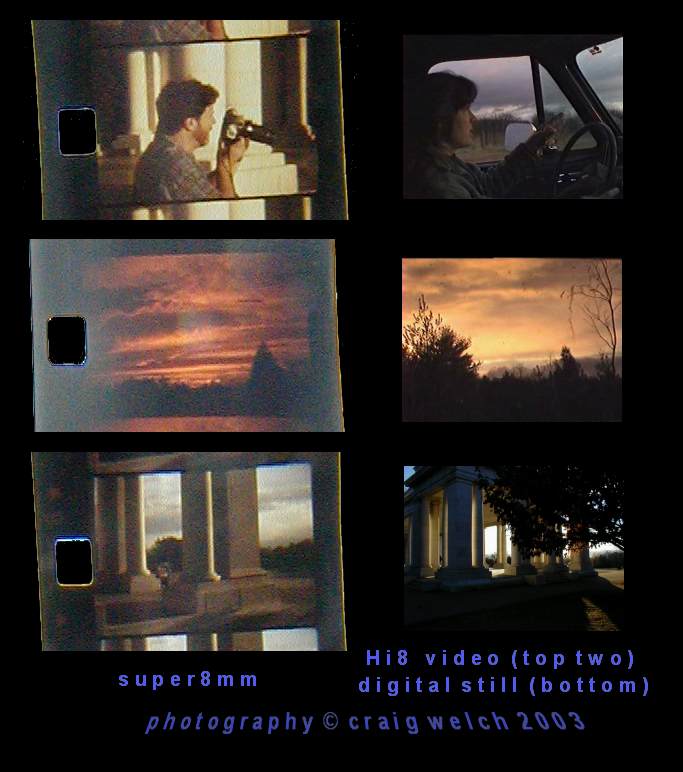
Each Super 8mm film frame in this image is paired with a similar Hi8 video frame to its right. The subjects are similar and the lighting and exposure are to best advantage for each medium. The important consideration then is not quality in terms of how good the frame is in comparison. The point is the difference in the look of Super 8 and video. In this case, each is shown to advantage and the differences here are not so much quality as character. Super 8mm film is sometimes characterized as soft, rich in color (especially the Kodachrome K40), and dreamlike. I think the dreamlike quality here is evident in comparison with video and digital still since the electronic CCD capture has harder edges for objects, giving a more immediate here and now appearance to the objects. Super 8 is sometimes used in feature films for that very dreamlike quality combined with a pronounced grain when the small 8 mm guage film is blown to 35mm. Mixing video and film can be done effectively when playing each medium to its advantage. Experience and experimenting is the key. The cost of film and processing for Super 8 is about $25 to $40 per cartridge which will run 2 minutes 40 seconds when filmed at 24 fps. 16mm film and processing runs about twice that amount per 2 and 1/2 minutes for 100 feet at 24 fps.Film adds cost to a project in a very obvious way, especially when the cost of the video transfer of film to miniDV or S-VHS tape is added. It is the look. It is that richness of color and other worldly vision that film brings to our eyes and minds that is sought after. Good economics and judgement can combine the advantage of film and video in a seamless way when each is played to advantage.
 Single Perf 16mm Plus X (7231) Black and White Negative reversed and rendered as sepia tone. |
more...
page 1 | page 2 | page 3 | page 4 | page 5 |
page 6 | page 7 | page 8 | page 9